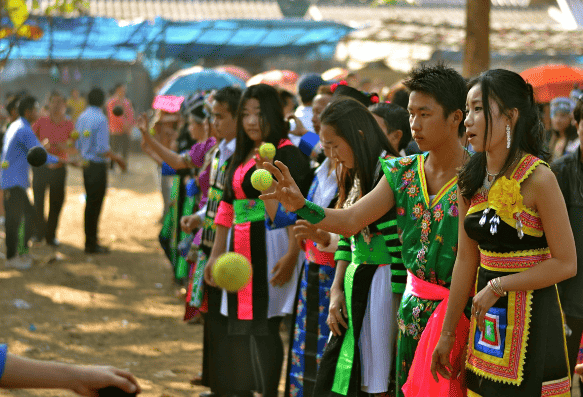Hmong Language in 2023 Unlocking the Hidden Treasures.
Table 1: Article Outline Table 2: Article The Fascinating World of the Hmong Language Introduction So, ever heard of the Hmong language? No? Well, that’s okay. It’s not as famous as French or as widely-spoken as Spanish, but it carries the weight of an entire culture on its vowels and consonants. In this article, we’ll…
Table 1: Article Outline
- Introduction
- Why the Hmong language is unique
- Importance in cultural preservation
- Background
- Origin of the Hmong people
- Geographic dispersion
- Linguistic Roots
- Language family
- Connection with other languages
- Writing System
- Script and symbols
- Modern adaptation
- Dialects
- White Hmong
- Green Hmong
- Pronunciation
- Tones
- Vowels and Consonants
- Grammar
- Sentence structure
- Word order
- Vocabulary
- Everyday words
- Cultural-specific words
- Phrases and Idioms
- Popular sayings
- Ritualistic language
- Language and Culture
- Language and Hmong rituals
- Music and folklore
- Preservation and Education
- Learning platforms
- Community initiatives
- Challenges
- Loss of native speakers
- Modernization
- The Future of the Hmong Language
- Technological interventions
- Younger generation involvement
- Conclusion
- FAQs
Table 2: Article
The Fascinating World of the Hmong Language
Introduction
So, ever heard of the Hmong language? No? Well, that’s okay. It’s not as famous as French or as widely-spoken as Spanish, but it carries the weight of an entire culture on its vowels and consonants. In this article, we’ll dive into what makes this language so unique and why it’s crucial for the preservation of the Hmong culture.

Background
The Hmong people originally hail from the mountainous regions of China. Due to historical and political events, they’ve dispersed into other countries like Vietnam, Laos, Thailand, and even the United States. How does the language fit into this mosaic? Read on.
Linguistic Roots
The Hmong language belongs to the Hmong-Mien language family. Although not directly related to Chinese, certain linguistic similarities do exist. Think of it like a distant cousin at a family reunion—you recognize some traits but can’t exactly place them.
Writing System
The Hmong writing system is unique, using a series of symbols, including Latin letters, to represent sounds. New scripts have been created over the years, allowing for easier integration with modern technologies like smartphones and computers.
Dialects
The language has two major dialects: White Hmong and Green Hmong. These dialects differ in pronunciation and some vocabulary but are generally mutually intelligible. It’s like American and British English—a few bumps here and there, but generally smooth sailing.
Pronunciation
The Hmong language uses tones to differentiate words. A word’s meaning can change based on the tone used. Imagine saying “hello” in a cheerful tone versus a sarcastic one—the word remains the same, but oh boy, does the meaning change!
Grammar
In Hmong, the sentence structure is generally Subject-Verb-Object (SVO). The grammar might not be as intricate as Latin, but it has its own set of rules that bring meaning and context to conversations.
Vocabulary
From everyday words like “food” and “water” to culturally specific terms linked to rituals, the vocabulary is rich and varied. The language even has specific words that are only used in traditional songs and stories.
Phrases and Idioms
The Hmong language is rich in idiomatic expressions and phrases that often derive from nature and daily life. Much like the way English uses “beating around the bush,” Hmong idioms add color and depth to conversations.
Language and Culture
Language plays a pivotal role in Hmong rituals, ceremonies, and folklore. It’s not just about communication; it’s a gateway to understanding their rich culture and history.
Preservation and Education
Given its cultural importance, various initiatives aim to preserve the Hmong language. There are community classes, online courses, and even apps to help people learn and keep the language alive.
Challenges
Despite preservation efforts, the language faces challenges like diminishing native speakers and influence from other dominant languages. It’s a tightrope walk between modernization and preservation.
The Future of the Hmong Language
With advancements in technology, the younger generation has tools at their disposal to learn and promote the language. The key is to marry tradition with modernity to ensure the language doesn’t just survive but thrives.
Conclusion
The Hmong language is not just a medium of communication but a treasure trove of culture, history, and identity. By taking steps to preserve and promote it, we’re not just saving a language; we’re keeping a culture alive.
FAQs
- What are the major dialects of the Hmong language?
- The major dialects are White Hmong and Green Hmong.
- Is Hmong a tonal language?
- Yes, it uses tones to distinguish between words.
- How is the Hmong language being preserved?
- Through community classes, online courses, and technological tools.
- What are some challenges the Hmong language faces?
- Loss of native speakers and the influence of dominant languages are major challenges.
- How is the Hmong language connected to its culture?
- The language is deeply ingrained in rituals, folklore, and cultural practices.
